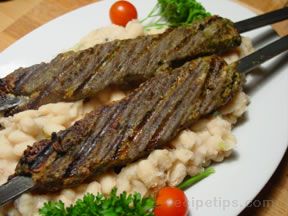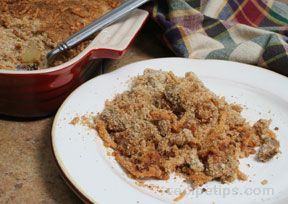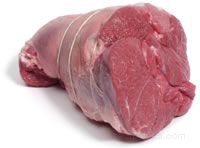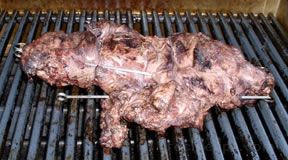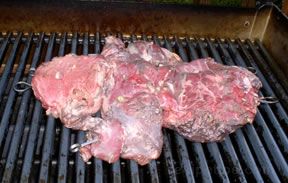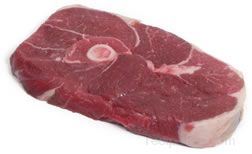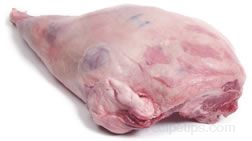Similar Content to: Spring Lamb
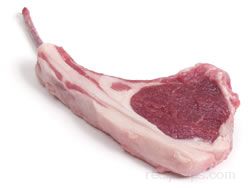
The meat from a lamb consists of 5 primal cuts known as shoulder, breast/foreshank, rib, loin/flank, and leg. The primal cuts are divided into market ready cuts such as lamb chops, leg of lamb, rib roast (rack of lamb), rolled boneless roasts, kabob and stew meat, and tenderloins. Ground lamb and ground lamb patties are also available.
Cuts of lamb may vary in color from pink to light red, but should always look fresh and not dull or slimy. The fat should be white and waxy looking. The bones should be reddish in color and moist looking, rather than dry. Some cuts may be all or partially covered with a silvery membrane, the "fell", which may be removed or left on depending on the recipe being used.
The federal government inspects all American lamb that is sold commercially. Government inspection of lamb is mandatory and concentrates on the safety and wholesomeness of the meat and not necessarily the quality. Visual inspection for animal diseases is performed as well a number of scientific tests on a statistical sampling of the meat. The tests are used to determine if any biological or chemical contamination is present. The primary concern is for the safety of the consumer.
Almost any type of cooking method can be used for lamb depending on the cut. For example, naturally tender cuts form the loin and rib benefit from dry heat cooking methods, such as roasting or grilling, while tougher cuts from the brisket and foreshank are best suited for moist heat cooking methods, such as braising.
Traditional guidelines state that lamb cooked very rare, rare, or medium rare should have an internal temperature ranging between 115ºF to 140°F as measured with a meat thermometer. With increased concern over bacteria that may be present in the internal portions of meat, it is now recommended that whole lamb cuts be cooked to an internal temperature of not less than 140°F, even though bacteria is usually only on the surface of the meat. An increase in the temperature of at least 5ºF occurs during the resting period (the period of time the meat should stand covered after removing it from the heat source and prior to serving) reaching 145ºF, which is considered the minimum safe internal temperature.
Lamb is a great source of protein and essential vitamins and minerals. A regular 3-ounce serving averages about 43% of the Recommended Daily Allowance (RDA) of protein. It also averages 74% of the RDA of vitamin B-12, 30% of the zinc, 30% of the niacin, 17% of the iron, and 15% of the riboflavin. In addition to this, the correct ratio of all 8 of the essential amino acids is contained in lamb meat.
Most cuts of lamb can be safely stored in the refrigerator at temperatures between 33°F and 40°F for 2 or 3 days. They can be stored in a freezer with a temperature of 0°F or less for 6 to 9 months. Refrigerated ground lamb should be used within 1 or 2 days and can be stored in the freezer for up to 4 months. Leftover cooked lamb that is refrigerated should be used within 3 or 4 days and can be frozen for up to 3 months.




